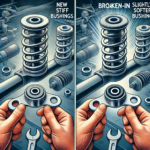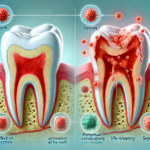How to Check for Bed Bugs: A Step-by-Step Guide to Detect and Prevent Infestations
Bed bugs are small, elusive insects that can cause discomfort and stress when they invade your home. If you’re concerned about a potential infestation, learning how to check for bed bugs is crucial. Bed bugs can spread quickly, so early detection is key to controlling them before the problem worsens. In this comprehensive guide, we’ll show you how to inspect your home for bed bugs, where to look, and what signs to watch for.
Why Check for Bed Bugs?
Bed bugs are notoriously difficult to spot due to their size and ability to hide in cracks, crevices, and fabrics. Detecting them early can help you prevent a full-blown infestation. Common reasons to check for bed bugs include:
- Bite marks on your skin: Unexplained red, itchy bites are often a sign of bed bug activity.
- Travel: Hotels, airplanes, and public places can be sources of bed bugs, and they can hitchhike into your home via luggage or clothing.
- Used furniture: Purchasing second-hand furniture or mattresses increases the risk of introducing bed bugs to your home.
How to Check for Bed Bugs: Step-by-Step Guide
Here’s a detailed step-by-step guide on how to inspect your home for bed bugs and the signs of an infestation.
Step 1: Inspect Your Mattress and Bedding
Bed bugs are most commonly found in and around beds, as they feed on human blood while you sleep. Start by inspecting your mattress, box spring, and bedding for signs of bed bugs.
Step-by-Step Instructions:
- Strip the Bed:
- Remove all sheets, pillowcases, and blankets from your bed. Carefully inspect them for small, reddish-brown stains (bed bug feces) or small dark spots (blood from crushed bed bugs).
- Inspect the Mattress Seams:
- Use a flashlight to examine the seams and edges of your mattress. Bed bugs like to hide in tight spaces, so pay close attention to these areas.
- Check for Bed Bug Exoskeletons and Eggs:
- Look for small, pale yellow exoskeletons that bed bugs shed as they grow, as well as tiny, white bed bug eggs that are about the size of a pinhead.
- Inspect the Box Spring:
- Remove the box spring cover (if applicable) and inspect the seams, corners, and underside. Bed bugs can often be found hiding in these areas.
Signs to Watch For:
- Small reddish stains from bed bugs being crushed.
- Dark spots or specks (fecal matter) left behind by bed bugs.
- Bed bug exoskeletons that have been shed.
- Eggs or eggshells, which are small, white, and oval-shaped.
Step 2: Check the Bed Frame and Headboard
Bed bugs can also hide in cracks and crevices of your bed frame and headboard. Since bed bugs are nocturnal, they often hide during the day and emerge at night to feed.
Step-by-Step Instructions:
- Use a Flashlight:
- Shine a flashlight on the joints, corners, and any cracks in your bed frame or headboard.
- Check Under the Headboard:
- Remove the headboard if possible and check behind it for signs of bed bugs.
- Inspect Any Screws or Hardware:
- Bed bugs can hide in the small gaps around screws or hardware. Look for signs of bed bug activity, such as tiny black dots or eggs.
Step 3: Inspect Nearby Furniture
If bed bugs have infested your bed, they may also have spread to nearby furniture, such as nightstands, dressers, or chairs.
Step-by-Step Instructions:
- Check Drawer Seams:
- Pull out the drawers from nightstands or dressers and inspect the seams and corners for bed bugs.
- Inspect Upholstered Furniture:
- If you have chairs or couches near your bed, inspect the seams, cushions, and crevices for signs of bed bugs.
- Look Behind Picture Frames and Wall Decorations:
- Bed bugs can sometimes hide behind picture frames, wall art, or other decorations hanging near the bed. Remove these items and check for any bed bug activity.

Step 4: Inspect Electrical Outlets and Baseboards
Bed bugs can also hide in tiny gaps around electrical outlets, baseboards, and cracks in the walls.
Step-by-Step Instructions:
- Remove Outlet Covers:
- Carefully remove outlet covers and inspect inside the outlet for any signs of bed bugs. Be cautious when handling electrical outlets to avoid injury.
- Check Baseboards:
- Shine a flashlight along the edges of baseboards, especially in corners and behind furniture.
- Look for Cracks or Gaps:
- Check for any small cracks or gaps in walls where bed bugs could be hiding.
Step 5: Inspect Your Luggage and Clothing
If you’ve recently traveled or suspect bed bugs came into your home through luggage, inspect your bags and clothes thoroughly.
Step-by-Step Instructions:
- Unpack Luggage Outside:
- If possible, unpack your luggage outside or in a garage to prevent any bed bugs from spreading inside your home.
- Inspect Seams and Zippers:
- Check the seams, zippers, and pockets of your suitcase for bed bugs or their droppings.
- Launder Clothes Immediately:
- Wash all clothing in hot water and dry them on high heat to kill any bed bugs that may have hitchhiked into your home.
Step 6: Use Bed Bug Detection Tools
If you want to confirm the presence of bed bugs, several tools and products can help detect them.
Bed Bug Detection Tools:
- Bed Bug Interceptors:
- These are small cups placed under the legs of your bed or furniture. They trap bed bugs as they try to climb up, helping you detect an infestation early.
- Bed Bug Glue Traps:
- Place glue traps near suspected areas of bed bug activity to capture them.
- Bed Bug Sniffing Dogs:
- In severe cases, professional pest control companies may use specially trained dogs to detect bed bugs.
How to Prevent Bed Bug Infestations
Once you’ve confirmed that bed bugs are in your home, or if you want to prevent an infestation, here are some preventive steps to take:
- Encase Your Mattress and Box Spring:
- Use bed bug-proof mattress and box spring encasements to trap any bed bugs inside and prevent new ones from entering.
- Vacuum Regularly:
- Vacuum your home frequently, especially around the bed, furniture, and baseboards.
- Reduce Clutter:
- Bed bugs can hide in cluttered areas, so keep your home organized and free of unnecessary items.
- Inspect Second-Hand Items:
- Always thoroughly inspect used furniture, mattresses, or clothing before bringing them into your home.
Common Questions About Checking for Bed Bugs
1. What are the first signs of bed bugs?
- The first signs of bed bugs include itchy red bites, small dark stains (bed bug droppings), and tiny white eggs or exoskeletons around the bed.
2. Where do bed bugs hide?
- Bed bugs typically hide in mattresses, bed frames, furniture, electrical outlets, and baseboards. They prefer tight, dark spaces.
3. How do I know if I have bed bug bites?
- Bed bug bites usually appear as red, itchy bumps in clusters or a line on exposed areas of skin, such as the arms, neck, and legs.
4. Can I see bed bugs with the naked eye?
- Yes, adult bed bugs are visible to the naked eye. They are about the size of an apple seed and are reddish-brown in color. However, eggs and nymphs are much smaller and harder to detect.
How to Check for Bed Bugs: Quick Reference Table
| Area to Inspect | Signs to Look For | Tools to Use |
|---|---|---|
| Mattress & Bedding | Dark spots, exoskeletons, eggs, reddish stains | Flashlight, magnifying glass |
| Bed Frame & Headboard | Bed bug shells, droppings, eggs | Flashlight, screwdriver (to check cracks) |
| Furniture | Bed bug droppings, shells, live bugs | Flashlight, bed bug interceptor traps |
| Electrical Outlets & Baseboards | Tiny bugs, droppings in cracks or crevices | Flashlight, screwdrivers |
| Luggage & Clothing | Bed bug droppings, small dark spots | Luggage inspection tools, bed bug glue traps |
Conclusion
Learning how to check for bed bugs is essential for early detection and prevention of infestations. By following these steps and inspecting common hiding places like mattresses, bed frames, and furniture, you can catch bed bugs before they spread. If you confirm the presence of bed bugs, taking preventive measures and seeking professional pest control can help eliminate the problem.
For more pest control tips and home care solutions, visit AnswerHowTo.com, your go-to source for practical advice.









